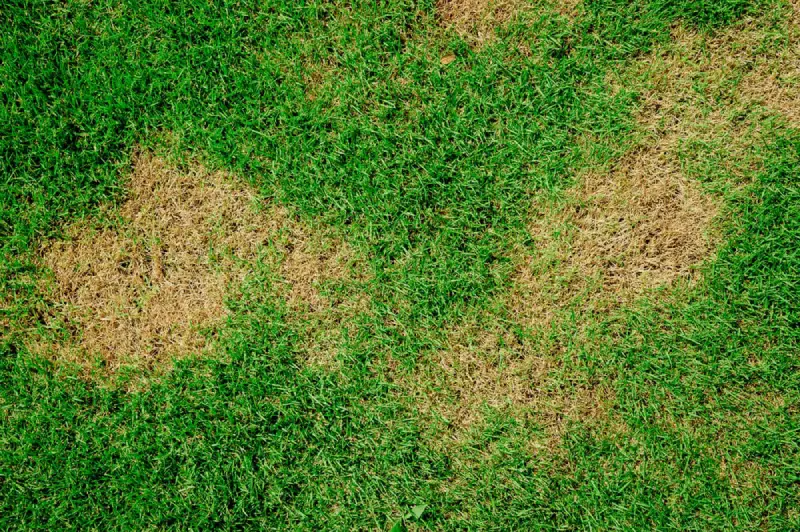Maintaining a healthy and vibrant lawn is not just about regular watering and mowing; it also involves understanding the signs of lawn diseases and taking preventive measures to protect your grass. Lawn diseases can be frustrating and quickly turn a lush, green yard into a patchy, brown eyesore. In this article, we’ll explore common lawn diseases, their causes, and practical steps you can take to prevent them.
What Causes Lawn Diseases?
Lawn diseases are primarily caused by fungi that thrive in specific conditions, such as excessive moisture, poor air circulation, and stressed grass. These conditions can result from environmental factors like humidity and temperature and poor lawn management practices such as overwatering, insufficient mowing, and inappropriate fertilisation. Additionally, certain types of grass are more susceptible to specific diseases, which can compound the problem if not managed properly. To prevent these issues, it is crucial to maintain a balanced approach to lawn care, ensuring that all aspects of lawn health are addressed. This includes choosing the right type of grass for your climate, regularly checking for signs of distress, and adjusting your care regimen to suit changing environmental conditions.
Key Factors Contributing to Lawn Diseases:
- Moisture Imbalance: Overwatering or poor drainage leads to excessive moisture, a breeding ground for fungi.
- Compacted Soil: Soil too compacted prevents proper air circulation and water drainage.
- Nutrient Deficiency or Excess: Unbalanced soil nutrients can weaken the grass, making it more susceptible to disease.
- Improper Mowing: Cutting grass too short can stress it, reducing its disease resilience.
Common Types of Lawn Diseases
Brown Patch
The brown patches appear circular patches of brown, dead grass and are most common in warm, humid weather. They affect various grass types and can spread rapidly if not treated.
Dollar Spot
Small, silver-dollar-sized spots of dead grass identify a dollar spot. It can occur during excellent, moist conditions and is especially prevalent in lawns with low nitrogen levels.
Snow Mold
Snow mould occurs under snow cover during the late winter and early spring. It creates circular patches of dead grass and is more common in colder regions.
Red Thread
This disease is recognised by the pink or red threads that form on the grass blades. It typically occurs in areas with high humidity and low nitrogen levels.
Prevention and Treatment Strategies
Preventing lawn diseases involves creating an environment that is unfavourable for disease development. Here are some effective strategies:
Improve Lawn Health
- Aerate Your Lawn: Aerating helps relieve soil compaction, allowing better air circulation and water drainage.
- Proper Fertilization: Use a balanced fertiliser to maintain healthy nutrient levels in your soil.
- Appropriate Watering: Water your lawn deeply but infrequently to encourage strong root growth and reduce surface moisture.
Cultural Practices
- Mow Correctly: Keep your mower blades sharp and mow at the recommended height for your grass type. Avoid mowing too short.
- Remove Thatch: Thatch build-up can harbour fungi and block water and nutrients from reaching the soil.
- Clean Equipment: Clean your lawn mower and other tools regularly to prevent the spread of fungal spores.
Monitor and Act Quickly
- Regular Inspection: Check your lawn regularly for signs of stress or disease.
- Early Intervention: Treat diseases early with appropriate fungicides or organic options, depending on your preference and the severity of the problem.
Seek Professional Help
Sometimes, despite your best efforts, you may need professional help diagnosing and treating lawn diseases. Professional lawn care services by Yard Dawgs can provide the expertise and treatment options necessary to restore your lawn to health. These services typically include soil testing, tailored treatment plans, and ongoing maintenance advice to prevent future outbreaks.
Conclusion
Understanding the causes and signs of lawn diseases is crucial for maintaining a healthy lawn. Following good lawn care practices and intervening early when problems arise can keep your lawn looking its best. Regular monitoring and maintenance, such as proper watering, mowing, and fertilising, prevent diseases. Remember, prevention is always better than cure, so invest time in improving your lawn’s health and resilience against diseases. Whether you manage lawn care or seek professional services, the key to success lies in consistent and knowledgeable care. Adopting a proactive approach to lawn maintenance not only enhances the beauty of your yard but also increases its ability to withstand the stresses that can lead to disease.



